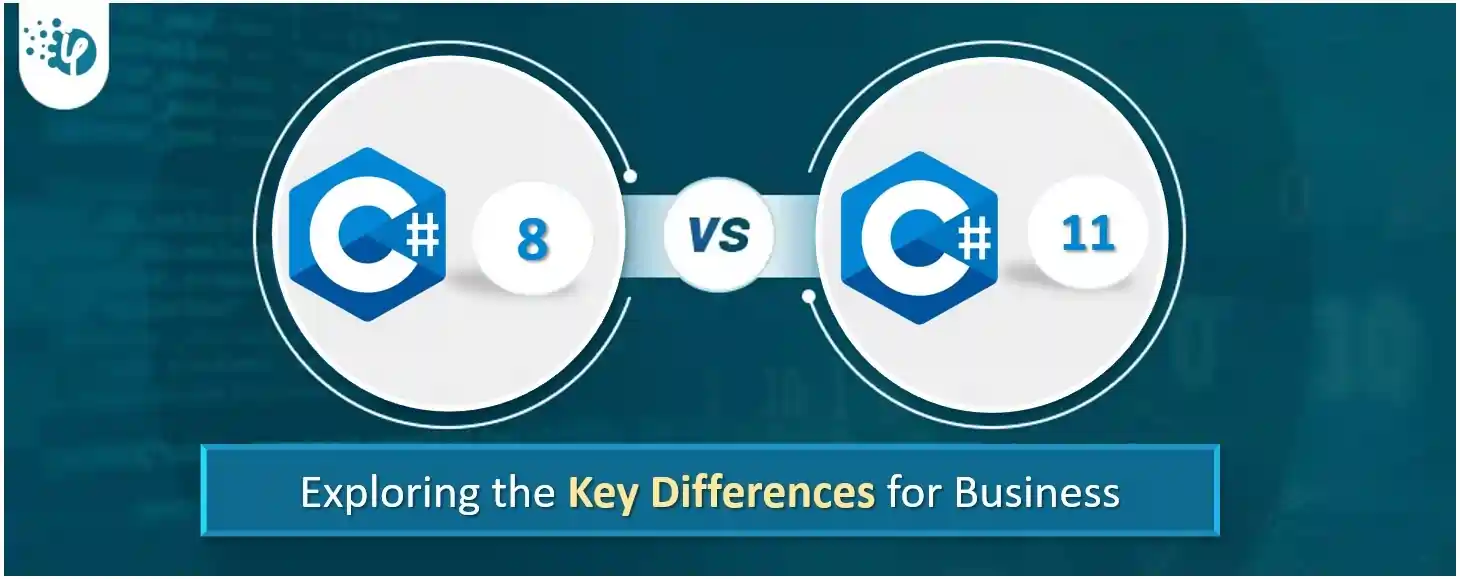How to Do Forecasting in Power BI (Steps & Accuracy Metrics)
Remember our last guide - Power BI forecasting? It revealed things that truly blocks accuracy, both structural and situational. Now it's time to take the next step. Knowing Power...
Listening is fun too.
Straighten your back and cherish with coffee - PLAY !

C# has been dominating the world of programming for the last two decades. Did you know it is the favored language of about 31% of professionals worldwide? Yes, it’s a formidable force that stood as a catalyst for transformative solutions. It is even surprising to know that 34% of Fortune 500 companies comprehensively rely on C# for custom DOT NET development projects. This technology has been constantly evolving since its inception, with each version bringing new additions and adjustments.
The introduction of C# 11 with latest features and additions took several developers by surprise. Some of them are cheering the innovations while a few are concerned about the drastic changes compared to C# 8. They are skeptical, questioning if the changes are really required when things are working fine
Change, as they say, is the only constant necessary for progress. With this logic, Microsoft software experts continue to rely on tried-and-true solutions to bring new updates and modifications in an ever-evolving language like C#.
Let's understand what is MERN stack development.
Despite support for numerous languages, C# has remained the most popular choice for projects that use the Microsoft.NET framework. It is the proven language of success for multiple large-scale projects of any .NET development company, and it is still preferred for bespoke software development. That's how C# rose to be one of the top five leading languages.
It has several versions released with new changes and updates to help .NET developers in bespoke software development projects. C# version 8 has been influential, bringing various new changes and improvements. However, some challenges remain which were been addressed in the latest version C# version 11.
As said change is the only constant, further features or changes could also be introduced in future versions. Now, let’s look at the key differences between CSharp v8 vs CSharp v11 and figure out what makes them different from each other.
| Feature | C#8 | C#11 |
|---|---|---|
| Nullable Reference Types | Introduced Nullable Reference Types | Enhanced and refined Nullable Reference Types |
| Asynchronous Streams | No support for asynchronous streams | Added support for asynchronous streams |
| Default Interface Methods | No support for default interface methods | Introduced default interface methods |
| Target-Typed new Expressions | Not available | Target-typed new expressions introduced |
| Pattern Matching Improvements | Basic pattern matching enhancements | Expanded pattern matching capabilities |
| Indices and Ranges | Introduced indices and ranges syntax | Continued support with possible enhancements |
| Switch Expressions | Limited support for switch expressions | Enhanced switch expressions and patterns |
| Null Coalescing Assignment (??=) | Not available | ntroduced the null coalescing assignment |
| Disposable Ref Structs | No support for disposable ref structs | Introduced disposable ref structs |
| Using Declarations | No support for simplified using declarations | Simplified and enhanced using declarations |
Let’s take a brief look at the core features of C# 8 and clarify each of them with an example scenario and usage.
Scenario: While working on custom software development, you might be required to match patterns within collections or lists. In such cases, List patterns are very helpful.
Scenario: Imagine scenarios of custom .NET development where default values for struct members are automatically handled.
In C# 8, the language took significant steps to improve concurrency and asynchronous programming. The introduction of “asynchronous streams” and “disposable asynchronous objects” offered developers more flexibility in handling asynchronous operations.
Asynchronous streams allowed for the asynchronous processing of sequences of data, which proved beneficial in scenarios where data retrieval or processing occurred asynchronously, such as fetching data from a web API.
However, while C# 8 marked a significant leap forward, there were still challenges. Developers had to manage some aspects of asynchronous code complexity manually, and the syntax, while improved, required careful handling to avoid pitfalls.
IFast forward to C# 11, and we witness a further evolution of concurrency and asynchronous programming features. C# 11 introduces refined mechanisms for handling asynchronous operations with even greater ease. The language builds on the lessons learned from C# 8, addressing complexities and enhancing the developer experience.
While C# 8 established a solid foundation for concurrency and asynchronous programming, C# 11 polished and optimized these capabilities for greater developer productivity and application performance. Migration from C# 8 to C# 11 may deliver enhanced reliability, performance, and streamlined development workflows for companies. All of these elements are required for providing responsive and successful software solutions. These capabilities are being developed in response to the changing demands of modern commercial systems, which must stay responsive, extensible, and maintainable.
This blog has gone through the importance of C#, and its pros and cons during custom software development. We then explored the key differences between C# 8 vs C#11 and learned the key features of C# V8 and C# V11. We also looked at the business implications and comparative analysis of both versions.

Remember our last guide - Power BI forecasting? It revealed things that truly blocks accuracy, both structural and situational. Now it's time to take the next step. Knowing Power...

It's amazing to see how Data teams today are racing ahead - moving from traditional warehouses to cloud-native platforms, lakehouses, and real-time architectures. But in this rush,...

Think about the last time CTOs spent most of their time fixing old systems. Updates were slow, servers were expensive, and adding new features took time. Now, things have changed....